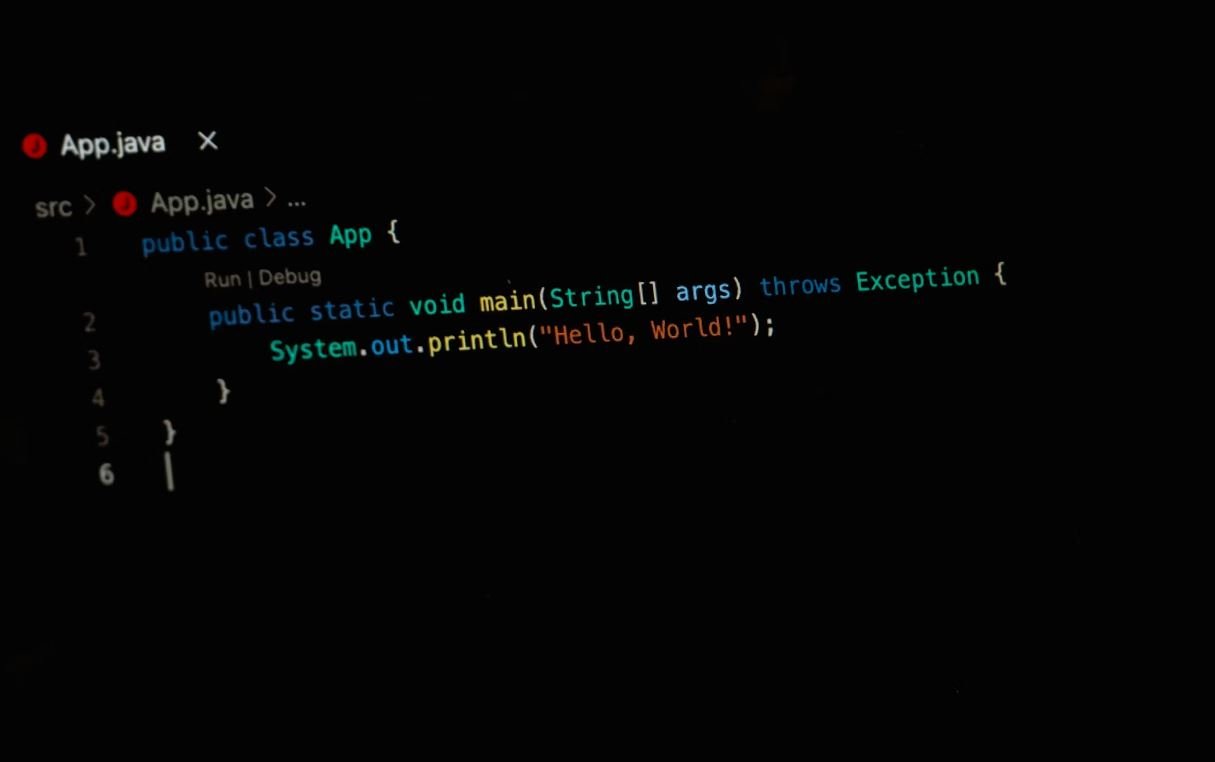Node Generative Music
Node Generative Music is an innovative approach to creating music using JavaScript and libraries
like Tone.js and Max/MSP. By combining code, algorithms, and sound synthesis techniques, artists
and musicians can generate unique and ever-evolving compositions. This article explores the concept
of Node Generative Music and its applications in modern music production.
Key Takeaways
- Node Generative Music utilizes JavaScript and libraries like Tone.js and Max/MSP to create unique compositions.
- Algorithms and sound synthesis techniques are employed to generate ever-evolving music.
- Node Generative Music offers artists and musicians a new creative tool for exploring experimental sounds.
Introduction
Node Generative Music is an exciting concept that combines the power of JavaScript with the endless
possibilities of generative art and music. It involves using code to create algorithms that generate
musical patterns, textures, and structures in real-time. These compositions can evolve over time,
creating a dynamic and ever-changing musical experience. With the help of libraries like Tone.js and
Max/MSP, artists and musicians can explore new sonic territories and push the boundaries of traditional music production.
Using JavaScript, Node Generative Music allows musicians and composers to program their own musical
rules and parameters, giving them full control over the generative process. By defining algorithms and
creating musical patterns with code, new and unique compositions can be generated. For example, a simple
algorithm might generate a repeating pattern of notes based on a mathematical sequence, while a more complex
algorithm can dynamically react to external stimuli and change the musical output accordingly.
Creating Node Generative Music
To create Node Generative Music, you would typically start by setting up a JavaScript environment. This could
be done using Node.js, which provides a runtime environment for executing JavaScript code outside of a web browser.
Once the environment is set up, you can install and import the necessary libraries like Tone.js and Max/MSP to
handle the sound synthesis and signal processing aspects of the generative music composition. From there, you can
begin writing code to define your musical rules and algorithms.
One interesting aspect of Node Generative Music is the ability to modulate various parameters of the composition
over time. This can be achieved by defining automation curves that control specific parameters like pitch, volume,
or filter cutoff. These curves can be based on mathematical functions or controlled by external input sources, such
as sensors or MIDI controllers. By modulating these parameters, the generative music becomes more dynamic and expressive,
adding an extra layer of complexity to the composition.
Applications of Node Generative Music
Node Generative Music is a versatile tool that can be used in various musical contexts and genres. Here are some
possible applications:
- Creating ambient and atmospheric soundscapes
- Generating unique percussive patterns and rhythms
- Exploring experimental melodies and harmonies
- Augmenting live performances with generative elements
- Designing interactive installations and audiovisual experiences
The flexibility of Node Generative Music allows artists and musicians to explore new creative territories and
push the boundaries of traditional music production. It provides a platform for experimentation and offers a fresh
perspective on composition. By embracing generative techniques, musicians can discover unexpected musical ideas and
create truly unique sonic landscapes.
Node Generative Music in Action
| Artist/Project | Description |
|---|---|
| Algorithmic Composer |
A project that uses Node Generative Music techniques to compose music based on a set of predefined musical rules and algorithms. The compositions are generated in real-time and can be customized and modified by the user. |
| Interactive Audiovisual Installation |
An installation that combines generative music with visual elements. Users can interact with the installation to influence the generative music composition and create unique audiovisual experiences. |
Tips for Getting Started
- Learn the basics of JavaScript and familiarize yourself with the Node.js environment.
- Explore the documentation and examples of libraries like Tone.js and Max/MSP to understand their capabilities.
- Experiment with simple algorithms and musical patterns to get a feel for generative music composition.
- Start small and gradually build upon your compositions, adding complexity and exploring new ideas.
- Embrace the generative nature of the process and be open to unexpected results and happy accidents.
Conclusion
Node Generative Music is an exciting and innovative approach to music composition that combines the power of code
with the artistic creativity of musicians and composers. By embracing generative techniques, artists can discover new
musical ideas and create unique compositions that evolve over time. Whether you’re an experienced programmer or a curious
musician, Node Generative Music offers a new creative tool for exploring experimental sounds and pushing the boundaries
of traditional music production.

Common Misconceptions
Node Generative Music is only for expert programmers
One common misconception about Node Generative Music is that it is exclusively for expert programmers. However, this is simply not true. While some knowledge of programming can be beneficial, it is not a requirement. Anyone with basic coding understanding and a willingness to learn can experiment and create music using Node Generative Music.
- Node Generative Music can be enjoyed by beginners with basic coding knowledge.
- There are numerous online resources available to help newcomers get started.
- Developers provide user-friendly tools and libraries to enable easy creation of generative music.
Node Generative Music compositions lack creativity and originality
Another misconception is that Node Generative Music compositions lack creativity and originality since they are generated by algorithms. However, this view overlooks the fact that these algorithms can be shaped and modified by the composer. Node Generative Music offers a unique opportunity to explore new musical territories and create truly innovative and original compositions.
- Node Generative Music allows composers to experiment with various parameters and rules for creating music.
- The composer’s creativity is crucial in designing algorithms that generate the desired musical output.
- Using Node Generative Music can lead to unexpected and surprising compositions that human composers might not have thought of.
Node Generative Music lacks emotional depth and expressiveness
Many people assume that Node Generative Music is incapable of conveying emotional depth and expressiveness compared to music created by human performers. While it is true that generative music is often algorithmic and less spontaneous, it does not mean that it cannot be emotionally captivating. By carefully designing the algorithms and incorporating human input, Node Generative Music can evoke a wide range of emotions.
- The composer can program the algorithms to produce rhythms, melodies, and harmonies that evoke specific emotions.
- Node Generative Music can capture the nuances of human performance styles, enhancing the expressiveness of the music.
- Combining generative music with other elements like visuals or narratives can further enhance its emotional impact.
Node Generative Music is limited to a specific genre or style
Some people believe that Node Generative Music is only applicable to certain genres or musical styles. However, Node Generative Music is a versatile tool that can be used to create music across a wide range of genres and styles. The algorithms and parameters can be adjusted to fit different musical contexts, making it a flexible tool for composers of varying musical preferences.
- Node Generative Music can be used to generate music in classical, jazz, electronic, or experimental genres.
- The style and mood of the generated music can be shaped by adjusting the algorithms and parameters accordingly.
- Artists from different genres have successfully incorporated Node Generative Music in their compositions to create unique sonic experiences.
Node Generative Music requires expensive equipment or software
Contrary to popular belief, Node Generative Music does not always require expensive equipment or software. While some professional-grade tools may come with a price tag, there are plenty of open-source and affordable options available. Additionally, many composers have created impressive generative music using free or inexpensive software, proving that access to costly resources is not a prerequisite for exploring this field.
- There are numerous free and open-source platforms and libraries for creating Node Generative Music.
- Some composers have developed their own inexpensive tools specifically catered to generative music creation.
- With a basic computer setup and readily available software, anyone can begin exploring Node Generative Music without breaking the bank.

Introduction
Node generative music is a fascinating concept that combines computer programming with artistry. Using algorithms and code, composers create music that is constantly evolving and changing. In this article, we will explore various aspects of node generative music and showcase them through visually appealing tables.
1. Famous Node Generative Composers
Get to know some renowned composers who have mastered the art of node generative music.
| Name | Country | Notable Works |
|---|---|---|
| Aphex Twin | United Kingdom | Selected Ambient Works 85-92 |
| Brian Eno | United Kingdom | Music for Airports |
| Alva Noto | Germany | Xerrox Vol. 3 |
| Holly Herndon | United States | PROTO |
2. The Evolution of Node Generative Music
This table showcases the progression of node generative music through key historical periods.
| Period | Features | Representative Composer |
|---|---|---|
| 1950s-1960s | Early experimentation, basic algorithms | Iannis Xenakis |
| 1970s-1980s | Advancement in algorithmic composition | La Monte Young |
| 1990s-Present | Integration of technology and complex algorithms | Max Richter |
3. Benefits of Node Generative Music
Explore the advantages that node generative music offers to both composers and listeners.
| Benefit | Description |
|---|---|
| Uniqueness | Each composition is one-of-a-kind |
| Endless Variation | Music evolves over time, creating new experiences |
| Reduced Bias | Less reliance on personal aesthetic choices |
4. Tools and Software for Node Generative Music
Discover popular tools and software that assist composers in crafting node generative music.
| Software | Description |
|---|---|
| SuperCollider | An environment for real-time audio synthesis and algorithmic composition |
| Max/MSP | A visual programming language for music and multimedia |
| Reaktor | A modular synthesis platform with a wide range of creative possibilities |
5. Notable Node Generative Music Pieces
Explore some famous node generative music compositions that have left a lasting impact.
| Piece | Composer | Year |
|---|---|---|
| “Generative Music 1” | Brian Eno | 1996 |
| “Grid Music” | Aphex Twin | 2014 |
| “Emerald Tablet” | Alva Noto | 2017 |
6. Node Generative Music vs. Traditional Composition
Compare the characteristics of node generative music with its traditional counterpart.
| Aspect | Node Generative Music | Traditional Composition |
|---|---|---|
| Audience Experience | Interactive and ever-changing | Static and predetermined |
| Composer’s Role | Algorithm designer and programmer | Manual score creation |
7. Ethical Considerations in Node Generative Music
Examine the ethical considerations that arise in the context of node generative music creation.
| Concern | Description |
|---|---|
| Authorship Attribution | Defining ownership and authorship of generative music |
| Data Privacy | Usage and protection of personal data in generative algorithms |
| Intentionality | Deliberate design choices and the role of randomization |
8. Node Generative Algorithms
Dive into some popular algorithms used to create node generative music.
| Algorithm | Description |
|---|---|
| Markov Chains | Transition probabilities between musical states |
| Cellular Automata | Grid-based models that evolve based on simple rules |
| L-Systems | Recursive system for generating self-similar patterns |
9. Applications of Node Generative Music
Discover the diverse range of applications where node generative music finds its use.
| Application | Description |
|---|---|
| Installation Art | Interactive audiovisual installations in galleries and museums |
| Film Soundtracks | Creating dynamic and evolving soundscapes for movies |
| Ambient Spaces | Providing atmospheric music in public spaces |
Conclusion
Node generative music opens up a world of endless possibilities for both composers and listeners. Its ability to create unique, ever-changing compositions through algorithmic processes revolutionizes the way we experience music. With the advancement of technology, the exploration of new algorithms, and the ethical considerations it poses, node generative music continues to push the boundaries of what music can be.
Frequently Asked Questions
Node Generative Music
What is Node Generative Music?
Node Generative Music is a technique that uses programming languages like Node.js to generate music through algorithmic means. It allows for the creation of unique and ever-changing compositions by utilizing code-based instructions.
How does Node Generative Music work?
Node Generative Music works by utilizing algorithms to generate musical patterns and structures. These algorithms can be designed to follow specific rules, such as harmonic progressions or rhythm patterns, or can introduce randomness to create novel compositions every time the code is run.
What programming languages are commonly used in Node Generative Music?
Node.js is a popular choice for implementing Node Generative Music due to its server-side capabilities and extensive package ecosystem. Other languages like JavaScript, Python, and Ruby can also be used depending on the individual’s preference and requirements.
Can I use Node Generative Music with hardware synthesizers and MIDI devices?
Yes, Node Generative Music can be integrated with external hardware synthesizers and MIDI devices. By using specialized libraries or protocols like MIDI over TCP/IP, you can control and interact with these devices programmatically, opening up endless possibilities for experimentation and live performances.
Are there any notable examples of artists or projects using Node Generative Music?
Yes, several notable artists and projects have embraced Node Generative Music in their work. One example is the artist Brian Eno, who has extensively worked with generative systems to compose and produce ambient music. Another example is the ‘TidalCycles’ project, where live coding and algorithmic sequencing are at the core of their musical exploration.
What are the advantages of using Node Generative Music?
Node Generative Music offers several advantages. Firstly, it allows for the creation of unique and ever-evolving compositions that can continuously surprise and inspire. Secondly, it encourages experimentation and exploration by combining programming and music. Lastly, it provides a way to automate composition and production processes, enabling artists to focus on higher-level creative decisions.
Do I need to be an expert programmer to start experimenting with Node Generative Music?
While some fundamental programming knowledge is helpful, you don’t need to be an expert programmer to start experimenting with Node Generative Music. There are resources like tutorials, documentation, and online communities that can assist beginners in getting started. As you explore and gain experience, you can gradually expand your programming skills and musical understanding.
Is Node Generative Music suitable for live performances?
Yes, Node Generative Music can be used for live performances. Many artists and musicians use live coding techniques to generate and manipulate music in real-time during performances. By utilizing Node Generative Music and live coding, you can create unique and dynamic musical experiences that react to the audience and the environment.
Can Node Generative Music be used in different genres of music?
Yes, Node Generative Music can be utilized in various genres of music. The techniques and algorithms can be adapted and customized to suit different musical styles, whether it’s ambient, electronic, classical, or experimental. The flexibility of Node Generative Music allows artists to explore diverse sonic territories and push the boundaries of genre conventions.
Where can I find resources and tools to start with Node Generative Music?
There are numerous resources and tools available to begin your journey with Node Generative Music. Online platforms like GitHub, npm (Node Package Manager), and community forums provide access to libraries, frameworks, and code examples. Additionally, there are tutorials, books, and online courses specifically dedicated to Node Generative Music that can help you dive deeper into this exciting field.




